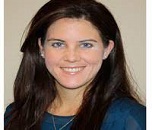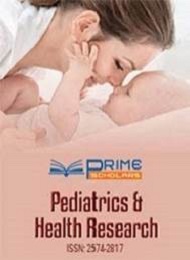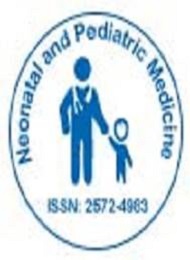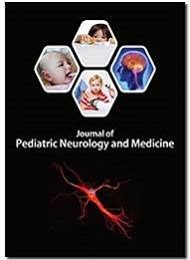Theme: "Advances in Pediatric & Neonatal Care" CME-CPD ACCREDITATION
Neonatology 2022
Neonatology 2022 Conference warmly welcomes all the organizing committee members, editorial board members of conference series LLC Ltd, as well as speakers, delegates, moderators, enthusiastic researchers, prominent scientists, students, exhibitors, and Young Student Community from all around the sphere to join the 2nd International Conference on Neonatology organized by Conference Series LLC Ltd scheduled in Madrid, Spain on October 19 – 20, 2022. Researchers and students who come here and give their sumptuous time from different parts of the globe have made the conference one of the most effective and prolific events in 2022. This conference was noticeable with the presence of prominent scientists, talented young researchers, students and business delegates motivating the two days event into the path of success with the provoking Keynote thoughts and plenary presentations highlighting the theme "Advances in Pediatric & Neonatal Care"
NEONATOLOGY 2022 analyses the entire work on as of late carried into the world youthful Ones with earlier and current work. It gives an essential review of the current circumstance with the subject. This innovative conference discuss the directions of Pediatric, surgery and neonatal care with advanced medical and family medicine in this fast moving and developing science and technology. This Conference provides the scope for opportunities to learn about latest technologies, medical practices and mainly focuses on spreading the awareness about how to prevent neonatal and pediatric diseases and various challenges in the field of neonatology and pediatrics.
Conferences series organizes 1000+ international Events inclusive of 1000+ Conferences, 500+ future and former Symposiums and Workshops in USA, Europe & Asia with support from a thousand additional scientific societies and publishes 700+ Open access Journals that contains over 50000 eminent personalities, acknowledged scientists as editorial board members.
Why to Attend?
NEONATOLOGY 2022, is a general stage which is set to discuss the on-going strategies and incites glanced in appropriate to kid social protection and medicine.
Neonatology social occasion purposely wants to propel data in the entire restorative and life sciences with a development to separate and work. It would be an ideal scene for the metropolitan Centre to share and make data on key instruments. The immediate shows pass on information, meet with present and likely specialists, make a sprinkle with new drug progressions, and get name affirmation at the regarded Neonatology events.
Objective
- Creating the specialized network.
- Scientific and marketing
- Sharing the knowledge about Boosting the immune system with nutrition
- Supplement core reading by engaging in a clinical discussion.
- To discuss the role of Nutrition in supporting the immune system relative to Covid 19 and other lifestyle disorders.
- Management of Obesity and Healthy Lifestyle.
- Networking Opportunities.
- Career Development Path for Participants tact
- Boosting scientific research with other scientific professionals in the country and throughout the world.
- Establish a network between the university and other related industries.
- Summarize the studies of Food and Nutrition Science
- Discoursing the latest findings and accomplishments in Food Science & Technology and Nutrition Science.
TARGET AUDIENCE
Neonatologists
Neonatal and Paediatric Faculties
Neonatal Associations and Societies
NICU Nurses
Pediatric Scientist
Pediatric Oncologists
Pediatric Researchers
Pediatric Nurses
Pediatric Physicians
Pediatric Specialists
Data Management Companies
Training Institutes
Business Entrepreneurs
Manufacturing Medical Devices Companies
Track 1- Paediatrics
Paediatrics is a part of prescription coping with the fitness and medicinal attention of babies, and kids from delivery as much as the age of 18. The phrase paediatrics implies the healer of baby fitness. The new child baby or neonate is considerably tested physiologically from that of a grown-up. So treating kids' fitness as greater than typical grown-ups simplifies paediatrics.
- Medical attention
Track 2-Perinatology
Another name for Perinatology is maternal-foetal medicine. This is mainly for the mother and foetus health during and after the pregnancy. Perinatologists act both as a consultant during lower-risk pregnancies and as the primary obstetrician in especially high-risk pregnancies. The field of maternal-fatal medicine or Perinatology is one of the most rapidly evolving fields in medicine, especially with respect to the foetus. Research is being carried on in the field of fatal gene and stem cell therapy in hope to provide early treatment for genetic disorders, open fatal surgery for the correction of birth defects like congenital heart disease, and the prevention of preeclampsia.
- High blood pressure
- Diabetes
- obesity
Track 3-Abortion
An abortion is when the pregnancy is ended so that it does not result in the birth of a child. This is also called a termination of pregnancy. The foetus is removed from the womb, either by taking pills (medical abortion) which involves taking medicines to cause a miscarriage, or by surgery (surgical abortion).
- Medical abortion
- Incomplete abortion
Track 4-Amniotic Bands
This disorder occurs when the bands of amnion (the inner lining of the amniotic sack) peels away from the sack and gets attached around parts of the baby's body, disrupting normal development. There are several forms of Amniotic band Syndromes that cause severe fatal deformities:
- Limb and/or body wall defect (LBWD)
- Body stalk complex
- Amniotic deformity, adhesions and mutilations (ADAM complex)
- Amniotic adhesion malformation syndrome
Track 5-Birth Asphyxia
Birth asphyxia happens when a baby’s brain and other organs do not get enough oxygen and nutrients before, during or right after birth; it results into a disorder known as Birth Asphyxia. Perinatal asphyxia can be the cause of hypoxic ischemic encephalopathy or intraventricular haemorrhage, especially in preterm births. An infant suffering severe perinatal asphyxia usually has poor colour (cyanosis), perfusion, responsiveness, muscle tone, and respiratory effort
- Asphyxia
- Neonatal mortality
Track 6-Breast Feeding
Breastfeeding (also called Nursing) is when you feed your baby breast milk, usually directly from your breast. It has a nearly perfect mix of vitamins, protein, and fat -- everything your baby needs to grow. And it's all provided in a form more easily digested than infant formula. Breast milk provides abundant and easily absorbed nutritional components, antioxidants, enzymes, immune properties, and live antibodies from mother. Mother’s more mature immune system makes antibodies to the germs to which she and her baby have been exposed. These antibodies enter her milk to help protect her baby from illness. Immunoglobulin A coats the lining of the baby’s immature intestines helping germs and allergens from leaking through. Breast milk also contains substances that naturally soothe infants.
- Colostrum
- Immunoglobulin A
Track 7-Hypocalcaemia Neonates
Neonatal hypocalcaemia occurs within the first two days of life and is most often caused by prematurity, being small for gestational age, maternal diabetes or hyperparathyroidism, and perinatal asphyxia. Neonates may have hypotonia, tachycardia, tachypnea, apnoea, poor feeding, jitteriness, tetany, and/or seizures.
- Maternal diabetes
- Tachycardia
Track 8-Necrotizing Enterocolitis
This is basically the death of Intestinal tissues in the new-born baby. The wall of the intestine is invaded by bacteria, which cause local infection and inflammation that can ultimately destroy the wall of the bowel (intestine). Such bowel wall destruction can lead to perforation of the intestine and spillage of stool into the infant’s abdomen, which can result in an overwhelming infection and death.
- Inflammatory disorder
- Typhlitis
Track 9-Neonatal Dermatology
Pediatric dermatology refers to the treatment of children and infants derma. This is used in diagnosis of various skin conditions, including haemangiomas and other vascular birthmarks, pigmented birthmarks, and congenital skin disorders, eczema or atopic dermatitis, psoriasis, contact dermatitis, Vitiligo, hives, and warts .
- Vernix caseosa
- Physiological scaling
- Sucking blisters
- Mongolian spot
Track 10-Neonatal Genetic Disorders
There are chances that a baby is born with genetic disorders. These are the direct result of a mutation in one gene. There are three types of genetic disorders: Single-gene disorders, where a mutation affects one gene; Chromosomal disorders, where chromosomes (or parts of chromosomes) are missing or changed; Complex disorders, where there are mutations in two or more genes. Examples include Cystic fibrosis, Sickle cell disease etc.
- Neurofibromatosis
- Down’s syndrome
- Glycogen storage disease
- Thalassemia
- Cystic fibrosis
Track 11-Neonatal Nutrition
Nutrient demands for preterm babies are challenging to meet, and hence the growth faltering is common. The primary and most important form of nutrition for infants is breastfeeding. For the infants who cannot breastfeed; standard infant formulas should be given to support adequate nutrition and growth.
- Breastfeed
- Cow milk
- Human milk
Track 12-Neonatal Seizures
These are the seizure in a baby younger than 4 weeks old. These can abnormally excessive or synchronous neuronal activity in the brain. They are the most frequent neurological problem in the nursery, and often require evaluation and treatment in a neonatal intensive care unit.
- Paroxysmal
- Stereotypical events
Track 13-Neonatal Sepsis
Neonatal sepsis is a blood infection that occurs in an infant younger than 90 days old. Early-onset sepsis is seen in the first week of life. Late onset sepsis occurs after 1 week through 3 months of age. Neonatal sepsis is divided into two categories: early-onset sepsis (EOS) and late-onset sepsis (LOS). EOS refers to sepsis presenting in the first 7 days of life (although some refer to EOS as within the first 72 hours of life), with LOS referring to presentation of sepsis after 7 days (or 72 hours, depending on the system used). Neonatal sepsis is the single most common cause of neonatal death in hospital as well as community in developing country.
- Blood infection
- LOS(LATE-ONSET SEPSIS)
- EOS(EARLY-ONSET SEPSIS)
Track 14-Neonatal Skin Infections
A new-born’s skin is extremely sensitive and may exhibit a variety of changes during the first four weeks of life. Skin rashes are common in neonates and can be dangerous to their health. During the first four weeks of life, the new-born period includes various dermatologic skin problems. Most of them are innocent and transient. However, serious infectious, congenital skin diseases and sometimes malign tumours should be taken into consideration. Neonatal skin lesions are common. Differentiation of the nonsignificant conditions from more serious clinical entities is important.
- Vesicopustular rashes
- Pustular lesion
Track 15-Neonatal Surgery
Neonatal surgery is performed on babies shortly after they are born. It is typically meant to treat conditions that cannot be diagnosed and/or addressed while still in the womb. Like fatal surgery, neonatal surgical procedures are unique to each condition. They can include minimally invasive procedures (often used to treat digestive issues, such as atresia), as well as more involved open surgical procedures, such as those used to treat heart and lung defects.
- Fatal surgery
- Heart defect
Track 16-Neonatal Vaccines
New-borns have an immature immune system that renders them at high risk for infection while simultaneously reducing responses to most vaccines, thereby posing challenges in protecting this vulnerable population. A vaccine is an antigenic preparation used to produce active immunity to a disease, in order to prevent or reduce the effects of infection by any natural or "wild" pathogen. Many vaccines require multiple doses for maximum effectiveness, either to produce sufficient initial immune response or to boost response that fades over time. For example, tetanus vaccine boosters are often recommended every 10 years. Vaccine schedules are developed by governmental agencies or physicians groups to achieve maximum effectiveness using required and recommended vaccines for a locality while minimizing the number of health care system interactions.
- BCG vaccine
- Neonatal immunization
Track 17-New-Born Screening
Screening in infants is done shortly after birth for conditions that are treatable, but not clinically evident in the new-born period. This is done to identify infants at risk for these conditions early enough to confirm the diagnosis and provide intervention that will alter the clinical course of the disease and prevent or ameliorate the clinical manifestations Squamous cell carcinoma.
- Blood test
- Genetic disorder screening
Track 18-New-Borns Common Problems
Infants are vulnerable to diseases just after birth and as they make a transition from the safety of the womb to this world. Common health problems in babies include colds, coughs, fevers, and vomiting. Babies also commonly have skin problems, like diaper rash or cradle cap. Many low-birth-weight infants will be able to suckle at the breast. Infants who can suckle should be breastfed. Those who cannot breastfeed should be given expressed breast milk with a cup and spoon.
- Cold cough
- Fever
- vomiting
Track 19-Retinopathy of Prematurity
Retinopathy of prematurity is a potentially blinding complication of preterm birth. The condition starts within a few weeks of birth and can progress rapidly over the following few weeks, or regress spontaneously. The international classification describes 5 stages, 3 zones, and plus disease (tortuosity and dilation of retinal blood vessels). In 2010 the annual incidence of blindness or visual impairment from ROP was estimated to affect 32,000 infants born preterm. All regions are now affected.
Risk factors for ROP include increasing prematurity, intrauterine fatal growth restriction and a range of postnatal risk factors including hyperopia and fluctuating hypo-/hyperopia, sepsis, failure to gain weight, thrombocytopenia and transfusion with blood products. Infants who are unstable, and who develop necrotising enterocolitis and bronchopulmonary dysplasia are particularly at risk.
- Prematurity
- Hyperopia
- Necrotic enterocolitis
Track 20-Zika and Microcephaly
A new born with microcephaly has a smaller head than other infants of the same sex and age, which is a birth defect. Smaller brains that may not have properly matured are frequently found in infants with microcephaly. Microcephaly is a condition brought on by zika virus infection during pregnancy. A baby's head develops during pregnancy because the baby's brain also expands. A baby's brain may not have fully formed throughout pregnancy or may have ceased growing after delivery, leading to microcephaly.
- Severe microcephaly with partially collapsed skull
- Reduced brain tissue with a certain type of brain injury
- Damage to the back of the eye, such as scarring or changes in pigment
- Limited range of motion joints, such as clubfoot
- Soon after delivery, excess muscle tone restricts movement
Track 21-Perinatal infection
The generally neonatal and fetal show measure was respected at 3.35 billion out of 2016 and is relied upon to make at a CAGR of 7.6% throughout the really take a look at time-frame. A piece of the variables liable for market improvement are the high pace of birth in non-modern nations, rising commonness of preterm births, and attempts by the association to build perseverance rates in such cases The Europe antepartum and heavenly messenger instrumentality Care Market was esteem USD 6.71 billion of each 2016 and it'll be creating at a CAGR of 6.2%, and compasses $2.36 billion by 2021. New-born child care is required essentially assuming there should be an event of preterm birth, that breezes up in the diseases like sub normality, mind issues, vision and hearing issues, and consistent respiratory organ sickness.
Members Associated with Child Care Research
Pediatric research includes a number of specialties like Pediatric cardiology, Pediatric allergy, Pediatric dermatology, Pediatric oncology, Pediatric surgery and many more. Every Pediatric specialty conducts research related to their respective topic to improve child health care. In Poland there are approximately around 970 Pediatricians. There are a number of general Pediatricians across the globe. As per the records it is being acknowledged that globally 7.62% are registered Pediatricians with specific specialty.
Life Expectancy
The life expectancy rate has often been in the favour of deaths, especially during the World War. The growth rate also stayed negative until around 2007, but recently the stats have changed. The growth rate has now become 1.19%, which is the estimate calculated in 2012. The birth rate in 2012 was estimated to be 9.96 per 1000 people. The death rate was calculated as 9.24 deaths per 1000 deaths, which is still very close to the birth rate. The fertility rate has been decreasing since 2008, which at that point was 1.39 children born per woman and has now reached 1.31 children born per woman.
Demographics
The median age of the total population is reported to be 38.5 years. Out of this, the median age for the male population was estimated to be 36.8 years, and for the female population it was reported to be 40.3 years.
The sex ratio at the time of birth between men and women is 1.06 males / female. For the age group under 15 years, it is 1.06 males / female. For the next age group, which is 15-64 years, it is 0.99 male / female. For the last age group, which is 65 years and over, the sex ratio is calculated to be about 0.62 male / female. When combined, this data gives an overall ratio of 0.94 male per female.
Infant mortality rate:
The infant mortality rate is estimated to be 6.42 deaths / 1000 live births for the total, with 7.12 deaths for the males and 5.67 deaths for the females per 1000 live births. The life expectancy at the time of birth is 76.25 years. For the male population it is 72.31 years, and for the females it is 80.43 years.
All the more that the deaths under 19 years of age are mostly avoidable, analysis of trends in deaths due to possibly modifiable factors enables taking preventive measures at the national and local level and contributes to reducing future mortality.
Although the number of deaths due to external causes among European children has decreased compared with those of the 1990s, the leading causes are transport accidents, drowning and other external causes. According to the World Health Organization (WHO), every year in the world, because of injury and violence about 950,000 children and adolescents below the age of 18 years die, of which nearly 90 % constitute unintentional injuries (WHO and UNICEF. In 2012, in the age group 5–14, injury mortality rate (MR).
Associations & Societies Associated with Pediatrics - Market Analysis
- The Institute of Cultural Affairs: Japan
- International Angel Association
- The International Nursing Foundation of Japan
- International Society for Mangrove Ecosystems
- The Japan Asian Association & Asian Friendship Society
- The Japan Association for Greening Deserts
- Japan Campaign to Ban Landmines
- Japan Chernobyl Foundation
- Japan Committee for Negros Campaign
- Japan International Food for the Hungry
- Japan International Volunteer Centre
- Japan NGO Centre for International Cooperation
- Japan NGO Network on Indonesia
- Japan Overseas Christian Medical Cooperative Service
- Japan Palestine Medical Association
- Japanese Organization for International Cooperation in Family Planning
Global Associations and Societies associated with Pediatrics:
- American Academy of Pediatrics
- American Society of Pediatric Otolaryngology
- American Pediatric Surgical Associations
- Society for Pediatric Dermatology
- Child Neurology Society
- European Pediatric Associations
- The North American Society for Pediatric and Adolescent Gynaecology
- American Academy Society
- Pediatric Infectious Diseases Society
- Society for Pediatric Radiology
- Society for Pediatric Anaesthesia
- Pediatric Trauma Society
- International Pediatric Associations
- Canadian Pediatric Associations
- American Society for Pediatric Oncology & Haematology
- Society for Developmental and Behavioural Pediatrics
- Indian Associations of Pediatric surgeons
- Dutch Associations of Pediatrics
We are thankful to all our wonderful Speakers, Conference Attendees, Students, and Associations for making the 37th International Conference on Neonatology, on September 10-11, 2021 in Paris, France Conference the best!
Neonatology Pediatrics 2021 was held on September 10-11, 2021 in Paris. Based on the theme ‘‘Future of Neonatology” Benevolent response and active participation were received from the Organizing Committee Members along with Scientists, Researchers, Students and leaders from various fields of Pediatrics, who made this event an outstanding success.
Conference Series LLC Ltd offers its heartfelt appreciation to
Organizing Committee Members, keynote speakers, dexterous of field, various outside experts, company representatives and is obliged to other eminent personalities who interweaved with the organization and supported the conference in every aspect, without which the conference would not have been possible.
Mark your calendars for the upcoming Conference; we are hoping to see you soon!
Let us meet again @ NEONATOLOGY 2022
Conference Highlights
- Pediatrics
- Perinatology
- Abortion
- Amniotic Bands
- Birth Asphyxia
- Breast Feeding
- Hypocalcaemia Neonates
- Necrotizing Enterocolitis
- Neonatal Dermatology
- Neonatal Genetic Disorders
- Neonatal Nutrition
- Neonatal Seizures
- Neonatal Sepsis
- Neonatal Skin Infections
- Neonatal Surgery
- Neonatal Vaccines
- New-Born Screening
- New-Born Common Problems
- Retinopathy of Prematurity
- Zika and Microcephaly
- Perinatal infection
To share your views and research, please click here to register for the Conference.
To Collaborate Scientific Professionals around the World
| Conference Date | October 19-20, 2022 | ||
| Sponsors & Exhibitors |
|
||
| Speaker Opportunity Closed | |||
| Poster Opportunity Closed | Click Here to View | ||
Useful Links
Special Issues
All accepted abstracts will be published in respective Our International Journals.
- Paediatrics & Health ResearchPaediatrics & Health ResearchPaediatrics & Health Research
- Neonatal and Pediatric Medicine
- Journal of Pediatric Neurology and Medicine
Abstracts will be provided with Digital Object Identifier by








